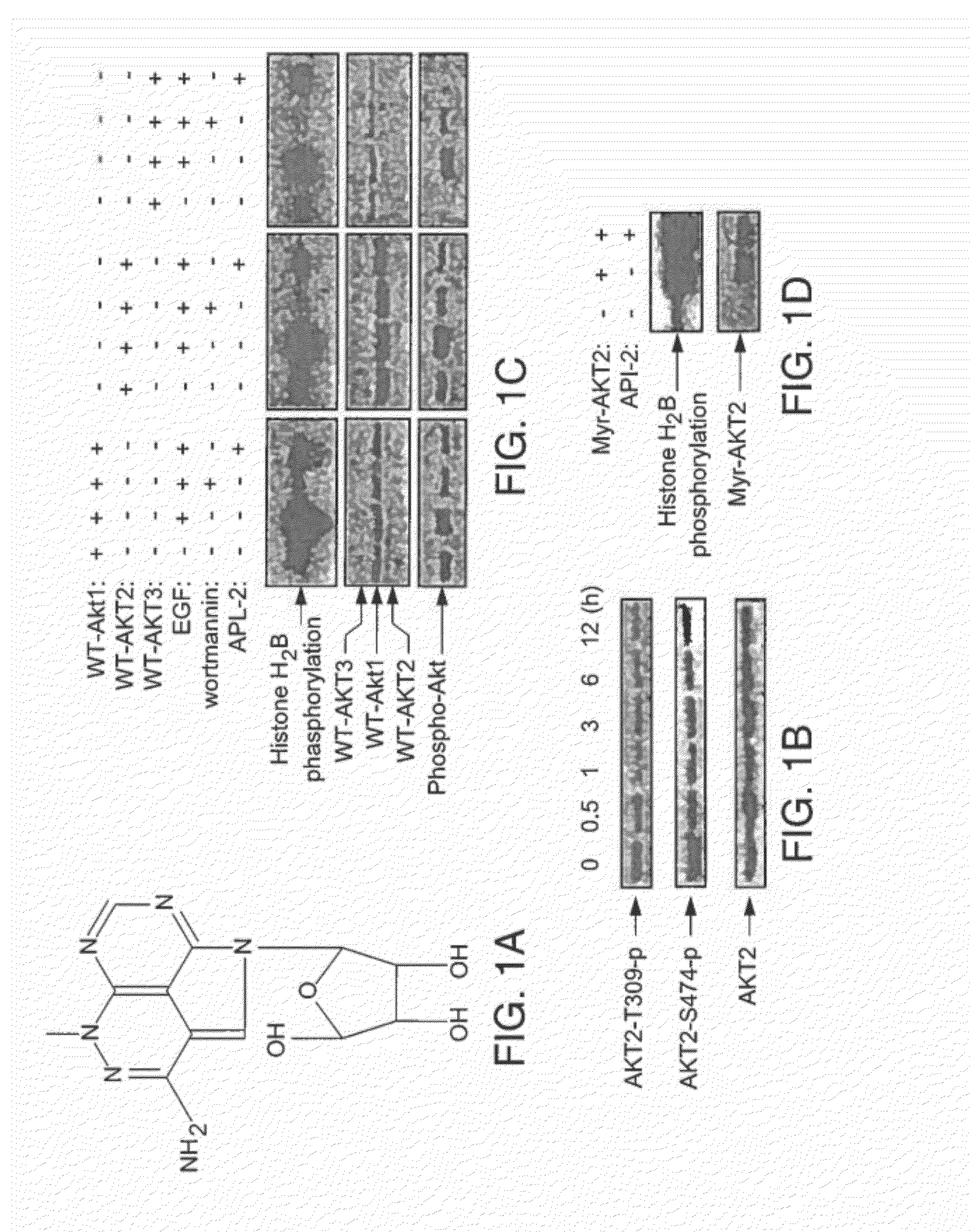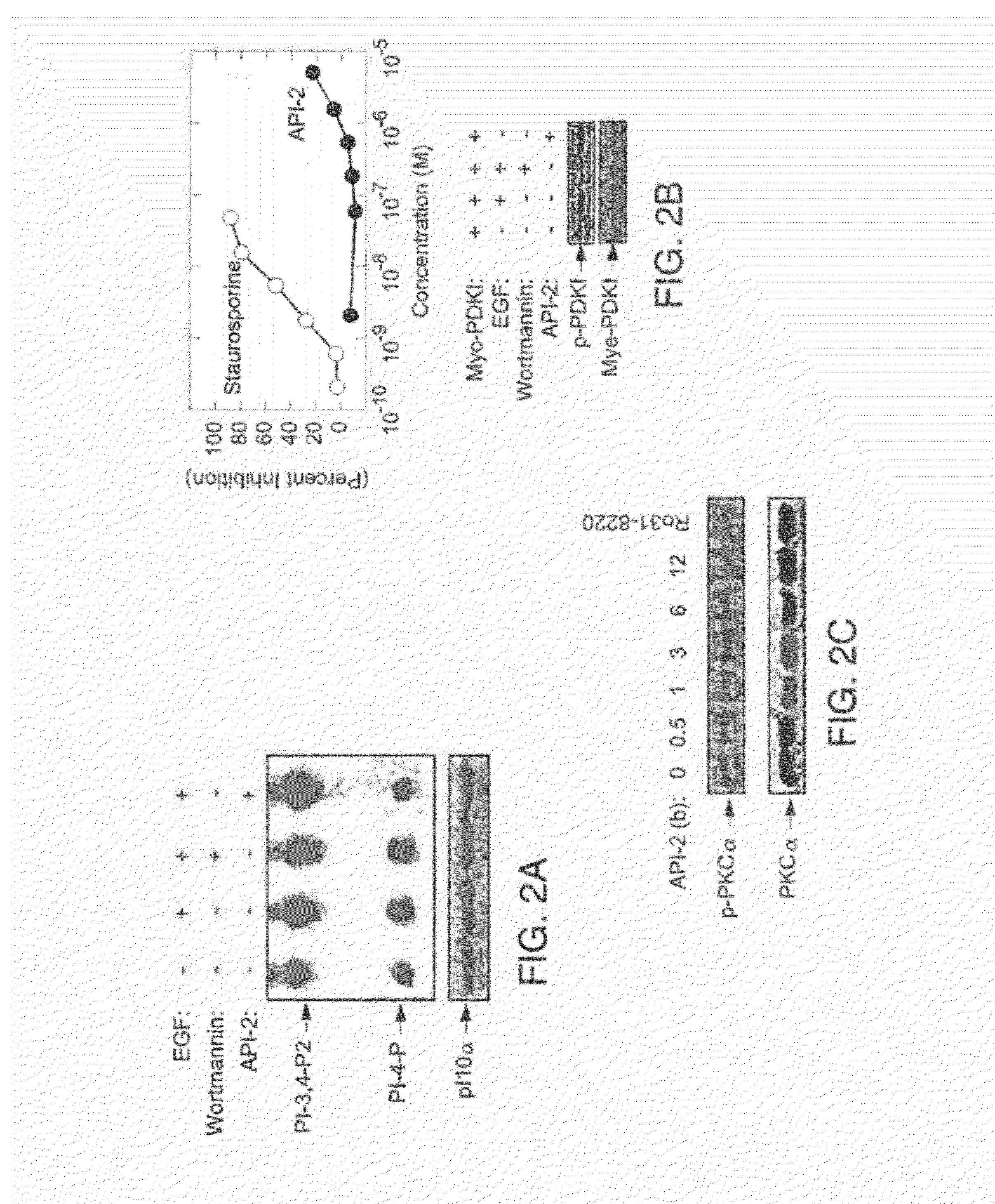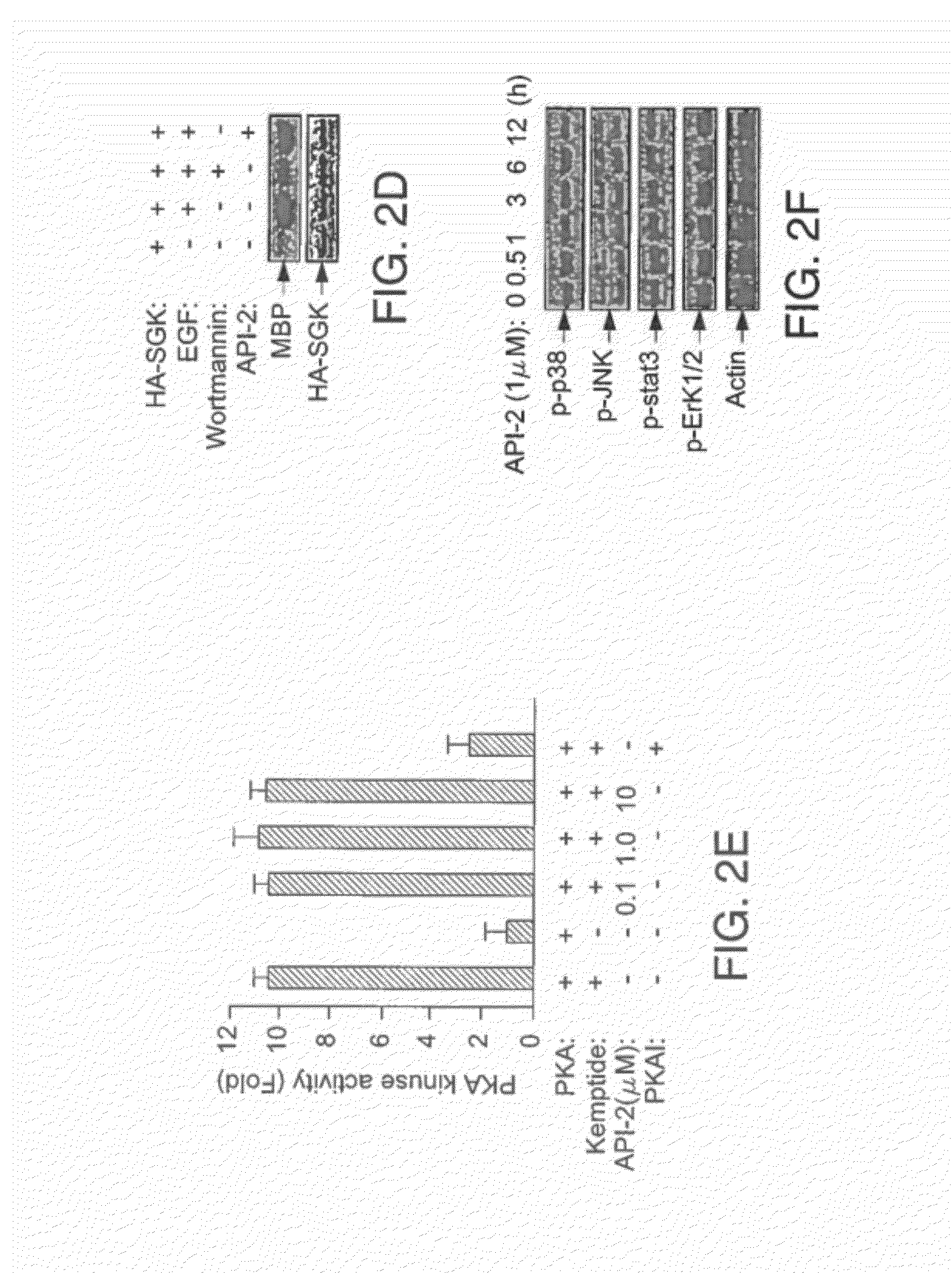Effective treatment of esophogeal adenocarcinoma using triciribine and related compounds
a technology of triciribine and esophogeal adenocarcinoma, which is applied in the field of triciribine, can solve the problems of overexpression of gene products, inability to function properly, and often different shapes of cancer cells, and achieves enhanced drug sensitivity, reduced toxicity of drugs, and reduced toxicity.
- Summary
- Abstract
- Description
- Claims
- Application Information
AI Technical Summary
Benefits of technology
Problems solved by technology
Method used
Image
Examples
example 1
In Vitro Screening
Materials
[0209]Cell Lines and NCI Diversity Set. All cell lines used in this study were either purchased from ATCC or described previously (Cheng, J. Q., et al. Oncogene, 14: 2793-2801, 1997, West, K. A., et al. Drug Resist. Updat., 5: 234-248, 2002, Satyamoorthy, K., at al. Cancer Res. 61: 7318-7324, 2001). The NCI Structural Diversity Set is a library of 1,992 compounds selected from the approximately 140,000-compound NCI drug depository. In-depth data on the selection, structures, and activities of these diversity set compounds can be found on the NCI Developmental Therapeutics Program web site.
[0210]Screening for Inhibition of Akt-transformed Cell Growth. AKT2 transformed NIH3T3 cells or LXSN vector-transfected NIH3T3 control cells (Cheng, J. Q., et al. Oncogene, 14: 2793-2801, 1997) were plated into 96-well tissue culture plate. Following treatment with 5 μM of NCI Diversity Set compound, cell growth was detected with CellTier 96 One Solution Cell Proliferatio...
example 2
Antitumor Activity in the Nude Mouse Tumor Xenograft Model
[0217]Tumor cells were harvested, resuspended in PBS, and injected s.c. into the right and left flanks (2×106 cells / flank) of 8-week-old female nude mice as reported previously (Sun, J., Blaskovic, et al. Cancer Res., 59: 4919-4926, 1999). When tumors reached about 100-150 mm3, animals were randomized and dosed i.p. with 0.2 ml vehicle of drug daily. Control animals were received DMSO (20%) vehicle, whereas treated animals were injected with API-2 (1 mg / kg / day) in 20% DMSO.
[0218]API-2 Inhibits the Growth of Tumors in Nude Mice that Overexpress Akt. Frequent overexpression / activation and / or amplification of AKT1 and AKT2 in human ovarian and pancreatic cancer was shown (Cheng, J. Q., and Nicosia, S. V. AKT signal transduction pathway in oncogenesis. In Schwab D, Editor, Encyclopedic Reference of Cancer. Berlin Heidelberg and New York: Springer; 2001. pp 35-7). Inhibition of Akt pathway by inhibitors of Pint., HSP70, Src and fa...
example 3
TCN Directly Inhibits Wild Type Akt Kinase Activity
[0219]API-2 (TCN) can directly inhibit wild type Akt kinase activity induced by PDK1 in vitro (FIG. 1). This result supports that API-2 is a direct Akt inhibitor and that the underlying mechanism may be API-2 binding to PH domain and / or threonine-308 of Akt. An in vitro kinase assay was performed with recombinant of PDK1 and Akt in a kinase buffer containing phosphatidylinositol-3,4,5-P3 (PIP3), API-2 and histone H2B as substrate. After incubation of 30 min, the reactions were separated by SDS-PAGE and exposed in a film.
PUM
 Login to View More
Login to View More Abstract
Description
Claims
Application Information
 Login to View More
Login to View More - R&D
- Intellectual Property
- Life Sciences
- Materials
- Tech Scout
- Unparalleled Data Quality
- Higher Quality Content
- 60% Fewer Hallucinations
Browse by: Latest US Patents, China's latest patents, Technical Efficacy Thesaurus, Application Domain, Technology Topic, Popular Technical Reports.
© 2025 PatSnap. All rights reserved.Legal|Privacy policy|Modern Slavery Act Transparency Statement|Sitemap|About US| Contact US: help@patsnap.com



